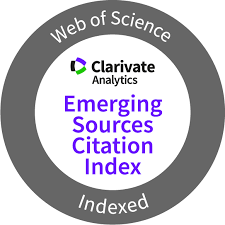Power plant monitoring and diagnosis
Development of a visual steady state detector
Keywords:
Time series, Data-mining, Diagnosis, Prognosis, Steam generatorsAbstract
The design and features of a Matlab® application, focused to providing support for data mining by serial time computing is presented. The input data come from both historical records from industrial (thermo-energetic) processes but also it can be generated by direct simulation through the Simulink application. The aim of this study is the monitorization of the different quasi-stationary states (QSS) in a power plant, in order to identify and perform the diagnosis of possible malfunctions. Up to 8 signals, linearly normalized and distributed can be visualized and the user, by means of two cursors, can select short windows of recorded signals. In this version, statistical data are computed, facilitating the static modeling which can be exported to an Excel file. It is an open software application allowing the implementation of new features. A particular command makes easier the dynamic modeling and its applicability is exemplified by analysis of times series from a particular 250 MWe thermal power plant.
Downloads
References
[2] S. Nihau, K. P. R. Vilankar and R. Rhinehart, “Type-II critical values for a steady-state identifier,” Journal of Process Control, vol. 20, nº 7, pp. 885-890, 2010.
[3] J. Finn, J. Wagner and H. Bassily ,“Monitoring strategies for a combined cycle electric power generator,” Applied Energy, vol. 87, nº 8, pp. 2621-2627, 2010.
[4] J. Ballester and T. Garcia-Armingol, “Diagnostic techniques for the monitoring and control of practical flames,” Progress in Energy and Combustion Science, vol. 36, nº 4, pp. 375-411, 2010.
[5] X. Z. Wang, “Knowledge discovery through mining process operational data, application of neural networks and other learning technologies,” Process Engineering, pp. 287-327, 2001.
[6] J. F. Macgregor, “Data-Based Latent Variable Methods for Process Analysis, Monitoring and Control," presented at the European Symposium on Computer Aided Process Engineering, 14, Lisbon, 2004.
[7] P. V. R. Carvalho, I. L. Dos Santos and M. R. S. Borges, “Micro incident analysis framework to assess safety and resilience in the operation of safe critical systems: a case study in a nuclear power plant,” Journal of Loss Prevention in the Process Industries, n° 21, pp. 277-286, 2008.
[8] M. R. Mano, R. Rengaswamy and A. Venkatasubramanian, “A signed directed graphbased systematic framework for steady-state malfunction diagnosis inside control loops,” Chemical Engineering Science, vol. 61, n° 6, pp. 1790-1810, 2006.
[9] M. W. Barry and N. B. Gallagher, “The process chemometrics approach monitoring and fault detection,”J. Proc. Cont., vol. 6, n° 6, pp. 329-348, 1996.
[10] K. J. Cios, W. Pedrycz and R. W. Swiniarski, Data mining methods for knowledge discovery. Boston: Kluwer Academic, 1998.
[11] J. Han and M. Kamber, Data mining: concepts and techniques. San Francisco: Morgan Kaufmann, 2001.
[12] S. Uson, A. Valero and L. Correas, “Energy efficiency assessment and improvement in energy intensive systems through thermoeconomic diagnosis of the operation,” Applied Energy, vol. 87, n° 6, pp. 1989-1995, 2010.
[13] Hand D, H. Mannila and P. Smyth, Principles of Data Mining. Cambridge: MIT Press, 2001.
[14] C. Apte, B. Liu, E. P. D. Pednault and P. Smyth “Business Applications of Data Mining. Communications of the ACM, vol. 45, n° 8, pp.49-53, 2008.
[15] U. M. Fayyad, G. Piatesky-Shapiro and P. Smyth, “From Data Mining to Knowledge Discovery: an overview,” in Advances in Knowledge Discovery and Data Mining. Menlo Park, Calif.: AAAI/MIT Press, 1996, pp. 1-34.
[16] M. Schladt and B. Hui, “Soft sensors on nonlinear steady-state data reconciliation in the process industry,” Chemical Engineering and Processing, n° 46, pp. 1107-1115, 2007.
[17] M. Kano, S. Hasebe, I. Hashimoto and H. Ohno, “A new multivariate statistical process monitoring method using principal component analysis,” Computers & Chemical Engineering, vol. 25, n° 7-8, pp. 1103-1113, 2001.
[18] J. F. MacGregor, “Data-based latent variable methods for process analysis, monitoring and control,” presented at the 37th. European Symposium of the Working Party on Computer-Aided Process Engineering, n° 18, pp. 87-98, 2004.
[19] P. Odiowei and Y. Cao, “Nonlinear dynamic process monitoring using canonical variate analysis and kernel density estimations, industrial informatics,” IEEE Transactions, vol. 6, n° 1, pp. 36-45, 2011.
[20] MATLAB/SIMULINK, http://www.mathworks.com, 2008.
[21] J. M. Blanco and F. Peña, “Analytical study of the effects of the clogging of a mechanical precipitator unit in air preheaters in a high-performance thermoelectric power plant based on available data,” ASME Journal of Engineering for Gas Turbines and Power, vol. 130, n° 2, pp. 22001-22007, 2008.
[22] C. Poma, V. Verda and S. Consonni “Design and performance evaluation of a waste-toenergy plant integrated with a combined cycle,” Energy, n° 35, pp. 786-793, 2010.
[23] J. M. Blanco and F. Peña “Optimizing preliminary design of industrial equipment involving different thermal engineering calculation procedures over a power plant”, in Thermal engineering research developments. New York: Nova Science Publishers, 2010, ch. 1.
Downloads
Published
How to Cite
Issue
Section
License
Copyright (c) 2019 Luis Vázquez, Jesús María Blanco, Francisco Peña, José Manuel Rodríguez

This work is licensed under a Creative Commons Attribution 4.0 International License.


















